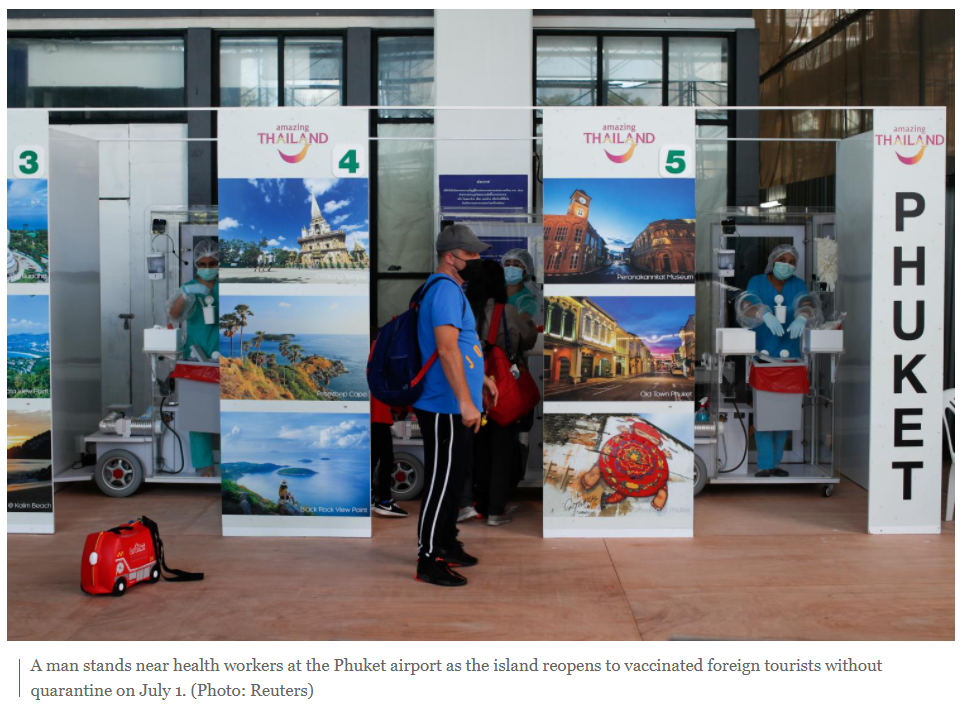Thailand: Obstacles mar TAT’s Mideast drive
Thailand faces roadblocks in attracting travellers from the Middle East because of the complicated certificate of entry (COE) application process and costly Covid-19 tests when compared with prices in Middle Eastern countries, says the Dubai office of the Tourism Authority of Thailand (TAT).
“Feedback from tourists about the Phuket sandbox is positive, but applying for the COE and expensive RT-PCR tests remain obstacles,” said Chaiwat Tamthai, director of the TAT’s Dubai office.
He said a RT-PCR test in the United Arab Emirates (UAE) costs 200-300 baht, compared with 8,000 baht for three tests for a 14-day stay in Thailand.
The number of COE applications during June 1 to Sept 7 from the UAE, comprising a mix of locals and expatriates hailing mostly from Europe, stood at 6,600.
Mr Chaiwat said the Phuket sandbox welcomed 5,000 tourists from the Middle East in the first month of the programme, before dropping to 2,000 in August due to stricter regulations and the start of a new school semester in the Middle East.
Travel demand remains in Oman, Jordan and Iran, but these countries are designated as high risk by Thailand because of ongoing Covid-19 outbreaks there as well as low vaccination rates, he said.
Mr Chaiwat said if Thailand maintains the same travel conditions, the number of tourists from the Middle East should reach 20,000 in the final quarter.
If requirements could be relaxed, 100,000 travellers from the region including expatriates may visit Thailand between this year’s fourth quarter and the first quarter of 2022, he said.
In 2019, Thailand logged 506,657 tourists from the Middle East, a reduction of 8% year-on-year, contributing 39.3 billion baht, a decrease of 7.2%.
The top three markets in the Middle East are the UAE (130,158 tourists generating 9.7 billion baht), Oman (85,680 tourists generating 6.3 billion baht) and Kuwait (78,199 tourists generating 7.4 billion baht).
Prior to the pandemic, tourists from the UAE spent 15,000 baht per day on average, while staying in the country for about seven days, said Mr Chaiwat.
With Dubai scheduled to host the World Expo from October to March next year, the Dubai office of the TAT plans to set up a promotional booth at the event in an effort to attract 10% of attendees to visit Thailand.
He said the TAT will use the Phuket sandbox as the key destination to promote Thai tourism in 2022, targeting the luxury segment with an interest in sports cars, yachts and golf.
Although there is demand for medical tourism, now is not the right time to promote the health and wellness segment amid a pandemic, as the country’s public health services should prioritise local containment of the virus, said Mr Chaiwat.
He said tourists from the Middle East should reach 200,000 next year as they usually travel in a group comprising 5-6 family members.
Source: https://www.bangkokpost.com/business/2182135/obstacles-mar-tats-mideast-drive


 Thailand
Thailand




